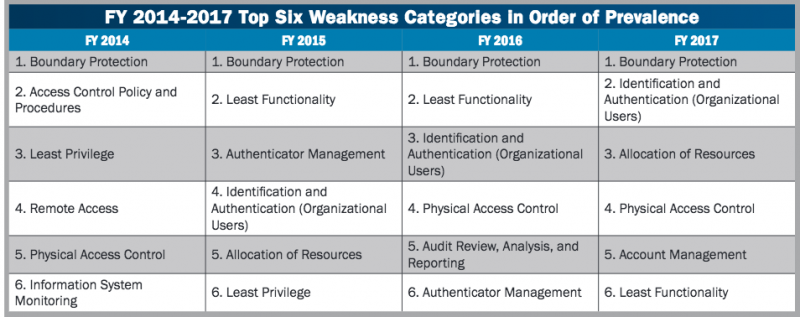Assessments conducted last year by the U.S. Department of Homeland Security’s Industrial Control Systems Cyber Emergency Response Team (ICS-CERT) showed that boundary protection remains the biggest problem in critical infrastructure organizations, but identification and authentication issues have become increasingly common.
Critical infrastructure owners and operators can ask ICS-CERT to conduct onsite cybersecurity assessments of their industrial control systems (ICS) in order to help them strengthen their cybersecurity posture.
In 2017, ICS-CERT conducted 176 assessments, which represents a 35 percent increase compared to the previous year. The agency analyzed organizations in eight critical infrastructure sectors, but more than two-thirds of the assessments targeted the energy and water and wastewater systems sectors.
The highest number of assessments were conducted in Texas (27), followed by Alaska (20), Nebraska (15), New York (14), Washington (13), Idaho (12), Nevada (10) and Arizona (10).
ICS-CERT identified 753 issues as part of 137 architecture design reviews and network traffic analyses. The six most common weaknesses, which accounted for roughly one-third of the total, were related to network boundary protection, identification and authentication, allocation of resources, physical access controls, account management, and least functionality.

Improper network boundary protection, which includes inadequate boundaries between enterprise and ICS networks and the inability to detect unauthorized activity on critical systems, has been the most common type of weakness since 2014.
Related: Learn More at SecurityWeek’s 2018 ICS Cyber Security Conference
As for identification and authentication issues, these can include the lack of mechanisms for tracing user actions if an account gets compromised, and increased difficulty in securing accounts belonging to former employees, particularly ones with administrator access.
Identification and authentication issues first made ICS-CERT’s top six weakness categories in 2015, when it was on the fourth position. In 2016 it jumped one position and last year it was the second most common security weakness.
Of all the identification and authentication issues, shared and group accounts are particularly concerning.
“[Shared and group accounts] make it difficult to identify the actual user and they allow malicious parties to use them with anonymity. Accounts used by a shared group of users typically have poor passwords that malicious actors can easily guess and that users do not change frequently or when a member of the group leaves,” ICS-CERT said in its latest Monitor report.
Allocation of resources for cybersecurity is also a problem in many critical infrastructure organizations. ICS-CERT’s assessment teams noticed that many sites are short-staffed and in many cases there is no backup personnel.
“Although some sites had started planning or attrition of staff, many did not have a plan to address loss of key personnel. One site had seven key personnel, four of whom would be eligible for retirement next year,” the agency said.
While its assessments do not focus on physical access controls, ICS-CERT has often noticed that organizations fail to ensure that ICS components are physically accessible only to authorized personnel.
“The team observed cases where infrastructure (i.e., routers and switches) was in company space but accessible to staff with no need to have physical access. Other cases included ICS components in public areas without any physical restrictions (i.e., locked doors or enclosures) to prevent access from a passerby. Some sites did not have locked doors to the operations plant, which would allow anyone to walk in and potentially have access to control system components,” ICS-CERT explained.
Related: Over Half of ICS Security Incidents Reported in 2014 Involved APTs














